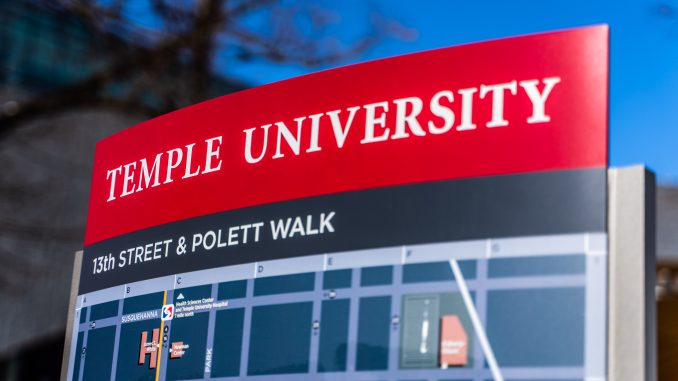
Although 73 percent of Temple University’s eligible student voters cast ballots in the 2020 election, student turnout is likely to decrease during the 2022 midterm election despite several key statewide races, like for governor and United States Senator, said Michael Sances, a political science professor.
Turnout will depend on if students still consider several factors that brought them to the polls in 2020 important, like the COVID-19 pandemic and the influence of controversial figures like former President Donald Trump.
“I’m very confident [voter turnout is] going to be less than 2020, across the board and among young people,” Sances said. “Relative to 2018, I’d say maybe we get as high as that, but again, I think a lot of 2018 was driven by the middle of the Trump presidency.”
Temple students’ turnout during the 2020 election was 13.6 percent higher than the 2016 election, said Chris Carey, senior associate dean of students who is in charge of Temple Votes, Temple’s non-partisan voter and civic engagement group.
The university received its 2020 voting data after their first-time participation in the National Study of Learning, Voting and Engagement, a Tufts University study that measures college and university students’ voting patterns. The study combines a database of 10 million students’ records with publicly available voting records from the 2012 to 2020 elections.
Data from the NSLVE was used for the “Democracy Counts 2020: Record-Breaking Turnout and Student Resiliency” report from the Institute for Democracy and Higher Education at Tufts, which incorporates voting rates from nine million students at 1,051 higher education institutions across all 50 states and the District of Columbia.
On a national level, about 66 percent of university students nationwide voted during the 2020 election – a 14-percent increase from the 2016 election, according to the report.
The nation overall boasted a 67 percent voting rate during the 2020 election – up six percent from the 2016 election. This means university students experienced above-average growth in voter turnout from the 2016 election to 2020.
In 2020, 83 percent of college students were registered to vote, and 66 percent actually cast their ballots. This is an increase from 2016 when 76 percent of college students were registered to vote, but only 52 percent actually voted.
Temple’s voter registration was at 83.6 percent for the 2020 election and 87.3 percent of those registered voters actually voted, Carey said.
This demonstrates that “yield rates” — the number of registered voters who follow through with casting their ballots — are increasing among college students, even though these rates have been low in previous years.
The increase in the national student voting rate can be attributed to several factors.
For example, younger students are typically more liberal, and may have been excited to either vote for President Joe Biden, the then Democratic nominee, or vote against former President Donald Trump. Other factors include the prominence of early voting and mail-in voting, and voters having more time to read about the candidates and issues during the COVID-19 pandemic, Sances said.
“I think part of that just being locked down and not having a lot of other things to do meant that people were paying more attention to politics,” Sances added.
Brynn Chafin, a first-year law student at the Beasley School of Law, attended the University of Arkansas while pursuing a communication degree when they voted in the 2020 election.
Even though Chafin knew Trump would win their state, they still felt it was important to vote for Biden.
“For me it was mostly kind of on the principle of it,” Chafin said. “Even though my vote wasn’t really gonna matter for my state, on principle. It’s important to go and just say what you’re thinking.”
Blessyn Marcelle, a junior political science major, believes communication and collaboration between college students is important for voter turnout.
“We found ourselves talking about it a lot and getting amped to vote,” Marcelle said. “It’s public record to see people are registered to vote. My friend and I, we would check to make sure our other friends were registered to vote.”
The voting rate amongst first-time student voters in 2020 was 59 percent, which was 16 percent higher than in 2016. Sances believes first-time voting rates are usually low because many first-time voters are 18 and have to take the initiative to register themselves.
“It’s never really been that high,” Sances said. “So, 59 percent, I think, is a pretty big number.”
Chafin encourages college student voters to get in the habit of voting.
“We’re setting ourselves up to be the ones moving into leadership in the future,” Chafin said. “And so, first, if we can just kind of set this routine of like every four years, I vote, if you can make that part of your life that’s important just to get turnout, turnout is always good, whether it’s for, you know, whether I agree with you or not.”



Be the first to comment